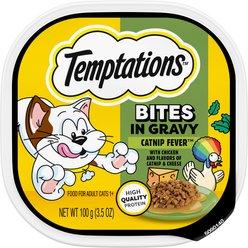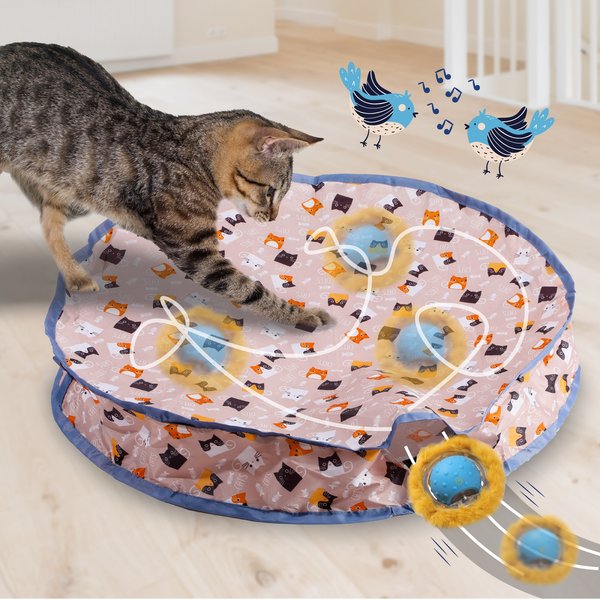

Introduction: Decoding the Whispers in the Bowl
We all want the best for our feline companions, and that starts with understanding what we’re feeding them. The pet food aisle can be overwhelming, a sea of brightly colored bags promising optimal nutrition. But how do you cut through the marketing jargon and truly understand what’s best for your cat’s health? Decoding cat food labels is crucial for responsible pet ownership.
This isn’t just about picking the cheapest or the prettiest bag; it’s about understanding the ingredients, their proportions, and how they contribute to your cat’s overall well-being. Just like humans, cats have specific dietary needs that must be met to ensure a long and healthy life. Ignoring the nuances of the label can lead to deficiencies, allergies, and other health problems down the line.
In this guide, we’ll explore the essential components to look for, from protein sources and carbohydrates to fats and added vitamins. Learning to read between the lines will empower you to make informed decisions, supporting your cat’s health and happiness from the inside out. So, let’s dive in and learn how to decipher those whispers in the bowl!
Why Cat Food Labels Matter: A Window into Your Cat’s Nutrition
Cat food labels are your primary source of information about what your feline friend is consuming, making it crucial to understand them. Learning to navigate cat food labels empowers you to make informed choices about their diet and overall well-being. These labels aren’t just marketing fluff; they’re a vital tool for ensuring optimal cat health.
First, pay attention to the ingredient list. Ingredients are listed in descending order by weight. Look for named protein sources like “chicken,” “turkey,” or “fish” listed as the primary ingredient. Avoid foods where generic terms like “meat by-products” or “animal digest” appear near the top, as these are often of lower quality.
Next, analyze the guaranteed analysis. This section provides the minimum percentages of crude protein and crude fat, and the maximum percentages of crude fiber and moisture. Consider your cat’s life stage and activity level when evaluating these values. Active kittens need higher protein and fat levels than senior cats.
Finally, always check for an AAFCO statement. This statement indicates that the food meets the nutritional standards established by the Association of American Feed Control Officials (AAFCO) for a specific life stage. This ensures the food provides complete and balanced nutrition for your cat’s needs, promoting optimal cat health and longevity.
By understanding these key components, you can confidently select cat food that supports a healthy and happy life for your beloved companion.

Photo by: Renee Bigelow
Decoding the Ingredient List: What’s Really in the Bowl?
Understanding the ingredient list on your cat’s food is crucial for ensuring their optimal cat health. Don’t be fooled by fancy marketing – the ingredients are listed in descending order by weight, meaning the first few items are the most abundant. Ideally, you’ll see a named meat source (like chicken, salmon, or beef) at the very top. Avoid generic terms like “meat by-products” or “animal digest” as these can be from unspecified and potentially unhealthy sources.
Next, consider whether you want whole grains or grain-free options, depending on your cat’s dietary needs and sensitivities. While some cats tolerate grains well, others may benefit from grain-free formulas to avoid potential allergens. Be wary of excessive fillers like corn, wheat, and soy, which offer little nutritional value.
Also, pay attention to added vitamins and minerals, which are essential for overall cat health. Look for ingredients like taurine, an amino acid vital for heart and eye function that cats can’t produce themselves.
Finally, understand that “natural” doesn’t always mean healthy. Read the entire ingredient list and research anything unfamiliar. By learning to decode cat food labels, you can make informed decisions and prioritize your feline friend’s well-being, ultimately contributing to better long-term cat health.
Understanding Guaranteed Analysis: Protein, Fat, Fiber, and Moisture
Decoding cat food labels can feel like deciphering a secret code! But understanding the Guaranteed Analysis (GA) is crucial for ensuring optimal cat health. The GA is the first place to look to assess the nutritional value of the food.
The most prominent components are protein, fat, and fiber. Protein is vital for muscle building and repair, energy, and hormone production. Look for high protein percentages, especially if your cat is active. Fat provides energy and supports healthy skin and coat. Fiber aids digestion and promotes gut health.
Don’t just look at the percentages, though! ‘As fed’ values can be misleading because they include moisture. Comparing dry matter values (which removes moisture) provides a more accurate comparison between different foods. Many online calculators can help with this conversion.
The GA also lists minimum and maximum percentages for certain nutrients. Moisture is often listed as a maximum, while ash (the mineral content) is included as well. Remember that the GA only gives you minimums and maximums, not the exact amounts of each nutrient. For a truly in-depth analysis, consider contacting the manufacturer directly. Understanding these basics is the first step toward making informed decisions about your cat’s diet and supporting their overall cat health.

Photo by: Anete Lusina
Dry vs. Wet Cat Food: A Nutritional Comparison
When choosing between dry and wet cat food, understanding the nutritional labels is crucial for your cat’s health. Both options offer benefits and drawbacks, but the ingredient list, guaranteed analysis, and AAFCO statement are your key to decoding what you’re actually feeding your feline friend.
Start with the ingredient list. Ingredients are listed in descending order by weight, so the first few ingredients give you a good indication of the food’s composition. Look for named meat sources (like chicken, beef, or fish) as the primary ingredients, rather than generic “meat meal” or unnamed animal by-products. Also, be wary of excessive fillers like corn, wheat, and soy, which offer limited nutritional value for obligate carnivores like cats.
The guaranteed analysis provides percentages of crude protein, crude fat, crude fiber, and moisture. These percentages help you compare the nutritional content of different foods. Wet food typically has a higher moisture content, which can be beneficial for cats prone to urinary issues, but may appear lower in protein when compared to dry food on a dry matter basis. Understanding these figures allows for informed choices that support optimal cat health.
AAFCO Statement: Ensuring Nutritional Adequacy
Decoding cat food labels can feel like deciphering a secret language, but understanding the AAFCO statement is crucial for your cat’s health. AAFCO, the Association of American Feed Control Officials, doesn’t regulate pet food, but they set standards for nutritional adequacy. The AAFCO statement on the label indicates the food is formulated to meet established nutrient profiles for a specific life stage, like growth (kitten), adult maintenance, or all life stages.
Look for phrases like “formulated to meet the nutritional levels established by the AAFCO Cat Food Nutrient Profiles for [life stage].” This means the food contains the minimum recommended amounts of essential nutrients. Be wary of labels that say “intended for supplemental feeding only” or lack an AAFCO statement altogether. These foods might not be nutritionally complete and could compromise your cat health in the long run.
Furthermore, pay attention to the feeding trial claim. If the label states the food’s adequacy was substantiated through feeding trials, it means AAFCO procedures were followed. This provides further assurance that the food delivers the promised nutrition and supports your cat’s overall well-being, directly contributing to positive cat health outcomes. Choose wisely!
Special Diets: Navigating Life Stage and Health Condition Needs
Choosing the right food is crucial for optimal cat health. But deciphering cat food labels can feel like navigating a foreign language. Here’s a breakdown of what you need to know to make informed decisions.
First, understand the guaranteed analysis. This lists percentages of crude protein, crude fat, crude fiber, and moisture. Remember, percentages alone aren’t enough. Protein source and digestibility are equally important. Look for named meat sources like chicken, turkey, or fish, not vague terms like “meat by-products.” High-quality protein supports muscle mass and overall vitality.
Next, scrutinize the ingredient list. Ingredients are listed in descending order by weight. The first few ingredients make up the bulk of the food. A healthy cat food will prioritize meat-based ingredients. Be wary of excessive fillers like corn, wheat, or soy, which offer little nutritional value.
Pay attention to the AAFCO statement (Association of American Feed Control Officials). This confirms the food meets nutritional standards for a specific life stage (e.g., kitten, adult, senior). This is critical for ensuring your cat receives the appropriate nutrients. Also, consider whether your cat has specific dietary needs due to allergies or health conditions, and consult your veterinarian for personalized recommendations to maintain optimal cat health.
Red Flags on Cat Food Labels: Ingredients to Watch Out For
Decoding cat food labels can feel like deciphering a secret code! But understanding what you’re feeding your feline friend is crucial for their long-term cat health. While ingredient lists are organized by weight (heaviest first), some ingredients should raise immediate red flags.
One major concern is an excess of unnamed meat sources. Look for specific names like “chicken,” “beef,” or “salmon.” Vague terms like “meat by-products” or “animal digest” can indicate low-quality ingredients. Corn, wheat, and soy are common fillers often used to increase the protein content without providing the necessary nutrients. These are difficult for cats to digest and can trigger allergies.
Artificial colors (like Red 40, Yellow 5, Blue 2) and preservatives (BHA, BHT, ethoxyquin) are unnecessary and potentially harmful. Your cat doesn’t care what color their kibble is! These additives have been linked to health problems and should be avoided. Also, watch out for excessive amounts of salt or sugar, as these can contribute to health issues over time. Investing a little time to read labels can significantly impact your cat’s health and wellbeing.
Beyond the Label: Considering Your Cat’s Individual Needs
Decoding cat food labels can feel like navigating a foreign language, but understanding the basics is crucial for supporting cat health. While labels provide essential information, remember they offer a general guideline, and every cat is an individual with unique dietary requirements.
Start by scrutinizing the ingredient list. Meat should be the primary ingredient, indicating a good source of protein vital for feline health. Look for named meats like ‘chicken’ or ‘turkey’ instead of vague terms like ‘meat by-products’. Then, pay attention to the guaranteed analysis, focusing on protein, fat, and fiber percentages. These figures give you a sense of the macronutrient balance.
However, this is just the starting point. Factors like age, activity level, and any existing health conditions significantly impact your cat’s nutritional needs. A kitten requires more calories and nutrients than a senior cat. An active outdoor cat needs more energy than a house cat. If your cat has allergies, sensitivities, or specific health issues like kidney disease, specialized diets may be necessary.
Don’t solely rely on the label – consult with your veterinarian. They can assess your cat’s individual needs and recommend the most appropriate food, ensuring optimal health and well-being. Remember, a balanced diet tailored to your cat’s unique profile is the cornerstone of a long and happy life.
Tips for Choosing the Right Cat Food: A Practical Guide
Choosing the right cat food can feel overwhelming, but understanding the label is a critical step in promoting cat health. Let’s decode some key elements. First, ingredient lists are ordered by weight, so the first few ingredients are the most abundant. Look for real meat, like chicken, turkey, or fish, listed prominently. Avoid foods where the first ingredients are corn, wheat, or by-products. These are often fillers and offer little nutritional value.
Next, pay attention to the guaranteed analysis, which outlines the percentages of protein, fat, fiber, and moisture. Adult cats generally need food with at least 30% protein on a dry matter basis. Kittens and senior cats may have different protein requirements.
Don’t forget to check the AAFCO statement. This statement indicates the food is “complete and balanced” for a specific life stage, like growth (kittens) or maintenance (adults). Finally, be wary of vague terms like “animal digest” or “meat by-products.” These can be lower-quality ingredients. Researching brands and opting for foods with transparent sourcing and high-quality ingredients is an investment in your cat’s long-term wellbeing.
Conclusion: Empowering Cat Owners Through Label Literacy
Decoding cat food labels might seem daunting at first, but it’s an incredibly powerful tool for ensuring your cat’s optimal cat health. We’ve explored the key elements, from understanding ingredient lists and guaranteed analysis to identifying potential red flags like excessive fillers or vague descriptions. By mastering these skills, you transform from a passive consumer to an informed advocate for your feline friend’s well-being.
Remember, the information on the label is your primary resource. Use it to compare different brands, assess the quality of ingredients, and make informed choices that align with your cat’s specific needs and life stage. Don’t hesitate to consult with your veterinarian; they can provide personalized recommendations and help you interpret complex labels in relation to your cat’s unique health profile.
Ultimately, label literacy empowers you to take control of your cat’s diet and, by extension, their overall health and happiness. A well-informed choice can lead to a shinier coat, improved digestion, increased energy levels, and a longer, healthier life for your beloved companion. So, embrace the knowledge, read those labels carefully, and give your cat the gift of a nutritious and balanced diet.
Call to Action
Decoding cat food labels can feel like deciphering a secret language, but hopefully, this guide has empowered you to make more informed choices for your feline friend. Remember, a healthy cat is a happy cat, and understanding their nutritional needs is a vital step in fostering a stronger bond.
Now that you’re equipped with this knowledge, why not share it? Educate your fellow cat owners! By spreading awareness, we can collectively improve the lives of cats everywhere and strengthen the incredible relationships we share with them. Let’s work together to ensure every cat enjoys a long, healthy, and fulfilling life, one informed food choice at a time.

